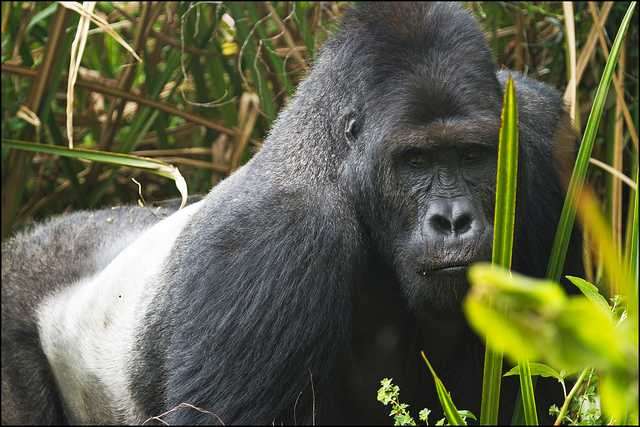Population analysis suggests Grauer's gorilla is Critically Endangered

Grauer's gorilla, which is confined to the eastern Democratic Republic of Congo, is now Critically Endangered, according to a study published October 19, 2016 in the open-access journal PLOS ONE by Andrew Plumptre from Wildlife Conservation Society, USA, and colleagues.
This is the first analysis of the Grauer's gorilla population since civil war broke out in the region in 1996. Since the war, armed miners have hunted bushmeat including gorillas, but the presence of militia has complicated assessments of the gorilla population. Plumptre and colleagues assessed local community and ranger-collected data that included encounter rates at gorilla nests at 10 sites as well as spatial occupancy across the species' range.
Before the war, the population was estimated at 16,900 individuals. The researchers now estimate that there are only 3,800 Grauer's gorillas left in the wild, a 77% decline in a single generation. While this species was previously classified as Endangered, the gorillas are now listed as Critically Endangered on the IUCN Red List of Threatened Species based on this new population estimate. The new analysis also suggests that the gorilla's range is about 19,700 km2, and identified three key areas that are the most critical for the remaining population of this great ape.
The researchers believe that Grauer's gorilla could be lost from many parts of its range within five years, and call for greater conservation efforts. Approaches include halting mining in protected areas as well as motivating the military to protect wildlife in this biodiversity rich region.
"While we knew that Grauer's gorilla was in trouble nobody had realised how much they had declined", stated Andrew Plumptre of the Wildlife Conservation Society who led the study. "The results in this paper provide the evidence to list this ape, which is the world's largest primate, as Critically endangered on the IUCN Red List of threatened species".
More information: Plumptre AJ, Nixon S, Kujirakwinja DK, Vieilledent G, Critchlow R, Williamson EA, et al. (2016) Catastrophic Decline of World's Largest Primate: 80% Loss of Grauer's Gorilla (Gorilla beringei graueri) Population Justifies Critically Endangered Status. PLoS ONE 11(10): e0162697. DOI: 10.1371/journal.pone.0162697
Journal information: PLoS ONE
Provided by Public Library of Science



















